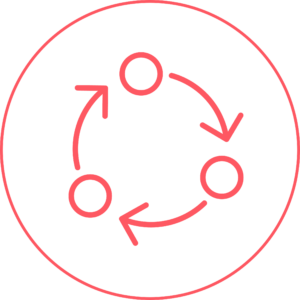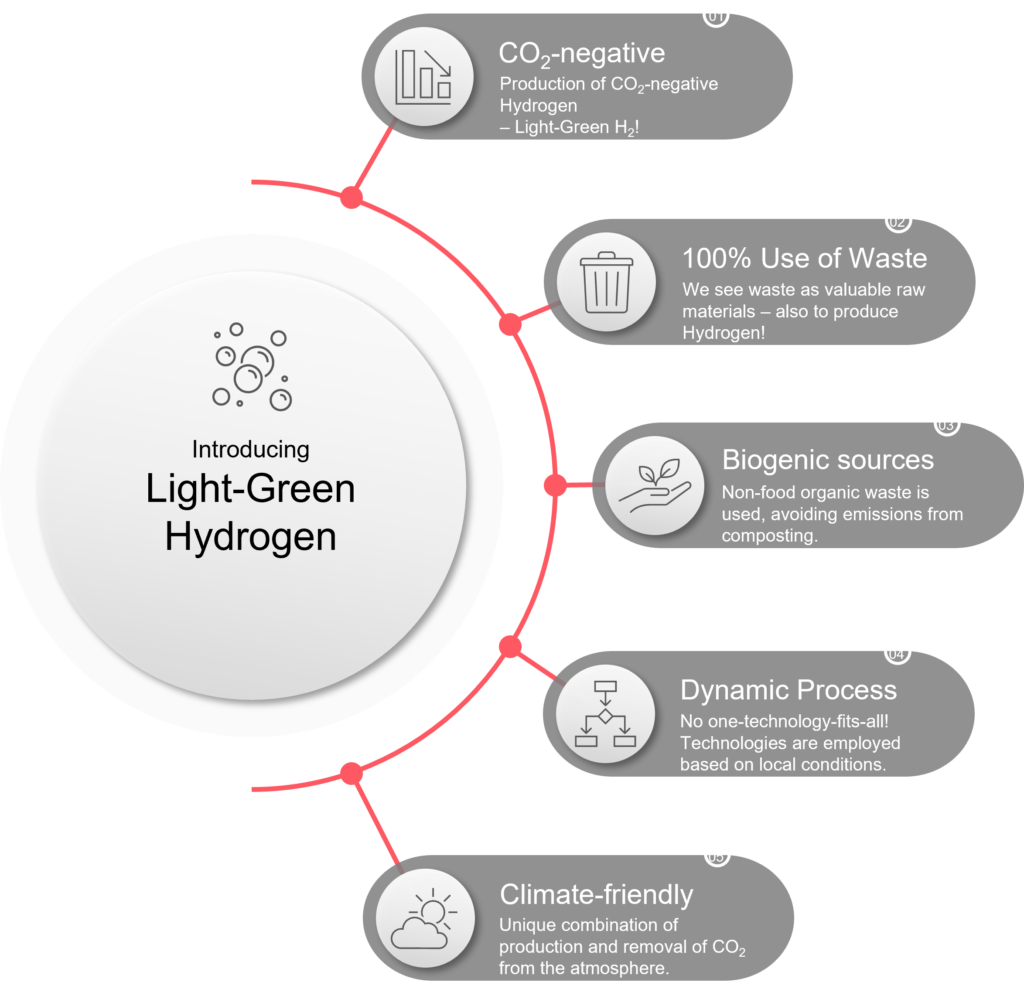Circularity
Taking Responsibility

Quick Answers
In a Circular Economy, waste is stopped being produced, Materials are reused, recycled, and recirculated and the impact on nature is minimised. This creates a system which has no more needs for exploitation of nature becaue all needed materials are already contained in the system.
The circular economy is based on three principles, as summarised by the Ellen McArthur foundation:
- Eliminate waste and pollution
- Circulate products and materials (at their highest value)
- Regenerate nature
A true Circular Economy works locally self-sufficient and emissions-free. In the best cases, a Circular Economy acts as a carbon sink through technological and biological processes.
Cradle-to-Cradle (C2C) is a concept coined by the chemist Braungart and architect McDonough. It describes a perfect cycle of Material use, in which everything taken from nature – the cradle – eventually goes back to nature without producing waste after use.
It is the opposite of our Cradle-to-Grave economy of today, where raw materials are being extracted from nature and end up in landfills or are burned, producing toxic emissions as an invisible waste polluting the whole world.
Every region is different. A Circular Economy in one place is not a solution for everywhere. For a Circular Economy to work, a lot of factors have to be considered. Some of the more important factors include:
- Regional climate
- Demography & population density
- Local society & values
- Local industry & work
- Local infrastructure
- Societal & political factors
- Governmental & industrial partners
- …
We have found ways to employ technologies in a way that local infrastructur and local value chains are interconnected to a circular web with only a few technologies at the center, working as interconnectors between seperate but interdependent entities.
We do not say that Circular Economies are trivial. But we believe that they are possible.
Greenhouse gases (GHG) are gases with the potential to increase the temperature of the atmosphere when they are emitted into te air.
The best-known greenhouse gas is CO2. Although CO2 has the highest impact on our climate today, there are other greenhouse gases with much higher potential to raise atmospheric temperatures. CO2 may be the biggest contributor but this is due to the tremendous amount of it emitted into the atmosphere.
The Global Warming Potential (GWP) tells us how much a gas would impact the atmosphere’s temperature compared to CO2.
Most greenhouse gases have a GWP higher than 1, meaning they are potentially more dangerous for global temperatures than CO2.
Methane, the primary substance in Natural Gas, has a GWP of 25 and is therefore 25 times more harmful to the climate than CO2. There are refrigerants still used in refrigerators today with a GWP of several thousand!
We have developed concepts for Circular Economies which work for certain regions in the world. Although we believe that there is a way to make Circular Economies work, regardless of where they are implemented, we know that the planet’s resources are not endless. A Circular Economy does not change that fact.
The honest answer is: there is a limit to our wealth if we truly wish for everyone to have equal access to clean water, food, education and a certain amount of wealth to live well. This limit is determined by the total amount of resources we can employ for ourselves without damaging the planet or ourselves.
The world will not change if we do not change with it. One day we will all have to acknowledge that our ever-growing needs and exploitation of the world’s resources must be limited to a level that allows our children and future generations to live on this planet.
Circularity
Our common dream is to devote our skills and knowledge to make this world a better and sustainable place for everyone, regardless of color, wealth, or religion.
We believe that we have found the right way to do this: Circularity. Of course, we have not invented the concept of circularity, nor have we coinded the term.
Almost 4 billion years ago, life formed on earth. Nature was born. Soon, life conquered the entire planet and the Circular Economy was invented.
Humans have traditionally – and naturally – used the circular system that our planet is to take out what they needed to survive. But everything is interconnected and interdependent. Only lately have we started to take out more from the system than the system is able to give. We have become disproportionally powerful thanks to our technological achievements. We have become so powerful that our actions today affect people far away from us, they affect nature and the planet in a very much striking and obvious way, and they even affect future generations.
We have become one across space and time.
Wielding this much power over the planet and even future generations implies that our task is to find the best possible solution based not only on pure technological power but also on empathy.
Here and now.
But also worldwide and for future generations.
We have found Circularity to be the answer to many of the big questions of Humanity. In this, we are a part of a growing consciousness around the world.
How our concepts work

The Concept of Light-Green Hydrogen
Light-Green Hydrogen is the idea that Hydrogen can and should be produced with a negative Carbon balance.
One very simple example is a combination of renewables-powered electrolysis plant with an also renewables-powered Carbon capture plant.This scenario is at the current state of technology highly inefficient but it helps understand the concept of Light-Green Hydrogen.
In our development of Circular Economies we have found that Hydrogen can be produced not only highly cost-effectively but also at a negative Carbon balance if the processes are connected in the right way.
